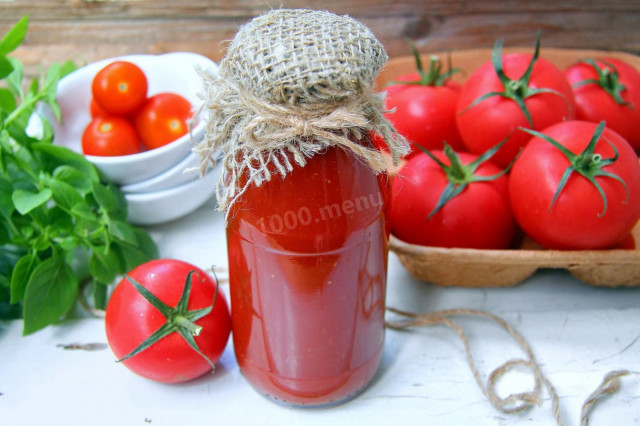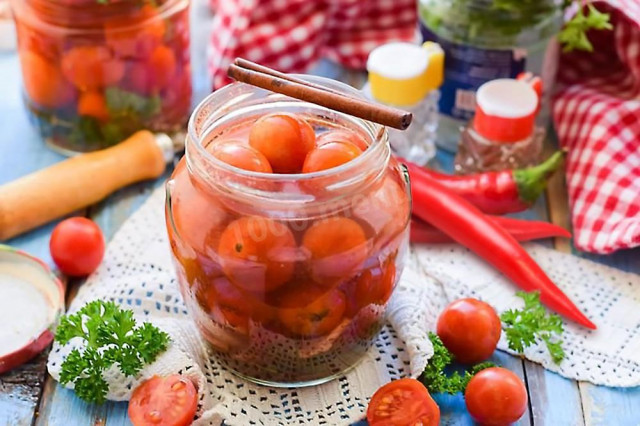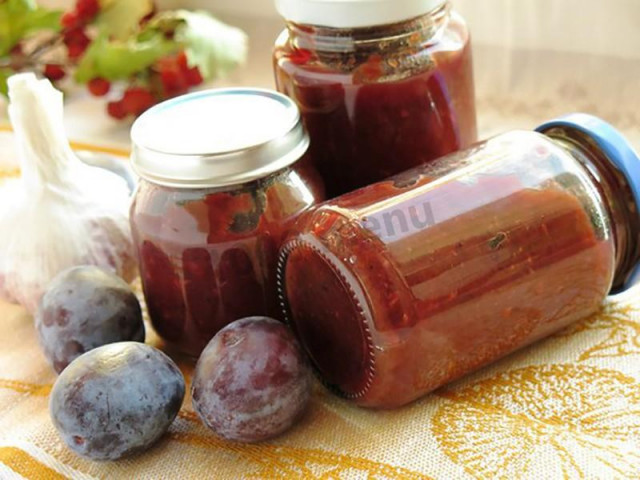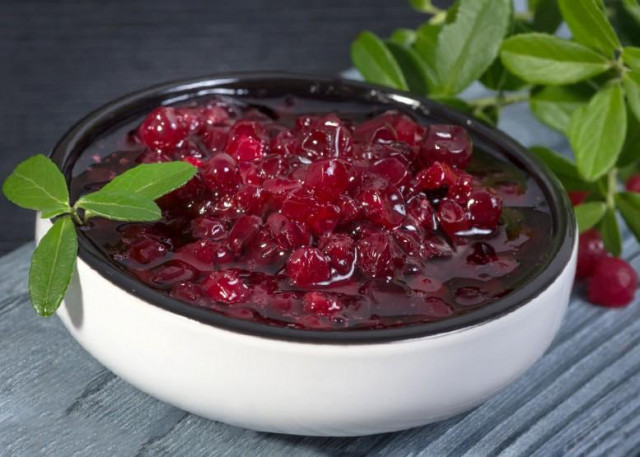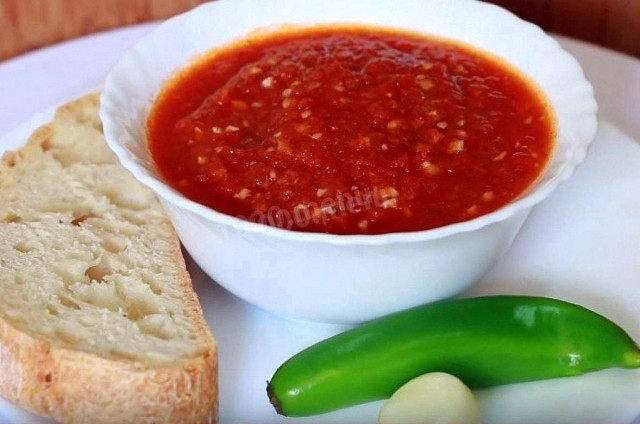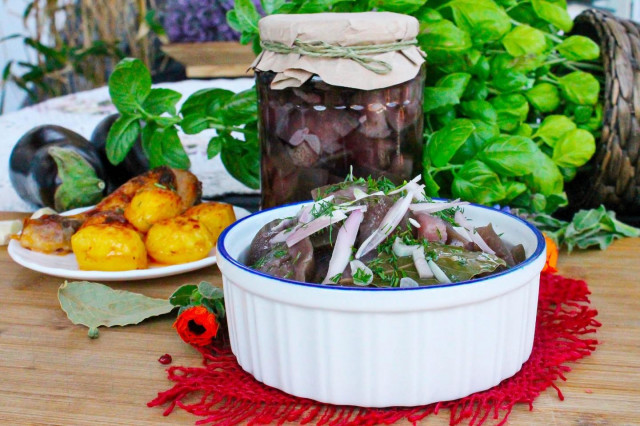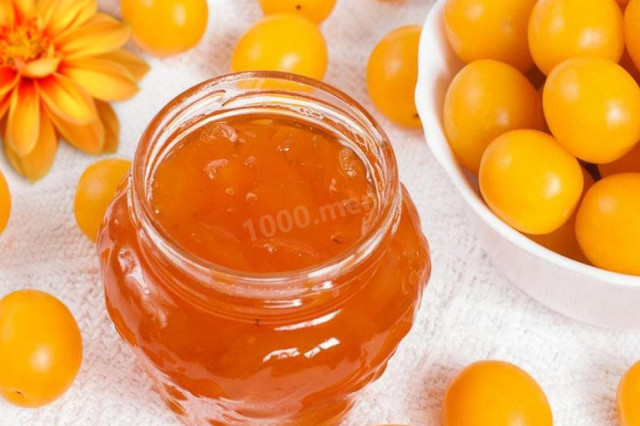Composition / ingredients
Step-by-step cooking
Step 1:
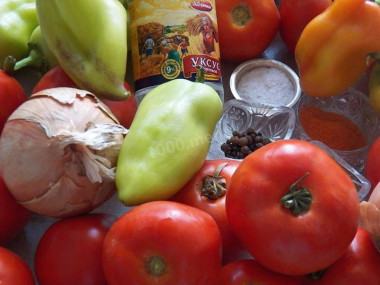
How to make tomato ketchup for winter? Prepare the necessary products according to the list. Vegetables of not the best marketable type may well be suitable for this recipe: crushed tomatoes, small peppers. The main thing is that the vegetables are not old, sluggish, sour, and do not emit an unpleasant smell. There will be no problems with everything else. And if they do, they will go away during the cooking process.
Step 2:
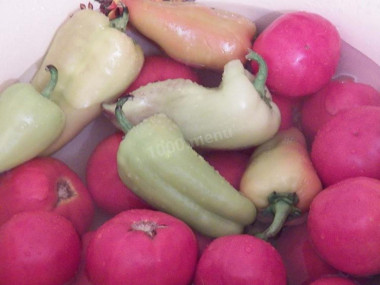
Thoroughly wash all vegetables under running water. Peel the onion and rinse it. If necessary, clean up the vegetables by removing the damaged parts. There is no need to wipe the vegetables with anything - we will still cook them. The color of Bulgarian pepper does not matter, you can choose it for taste and juiciness. Red, green, and yellow peppers will do. If you wish, you can supplement the composition with capsicum, it will add piquancy to the future ketchup.
Step 3:
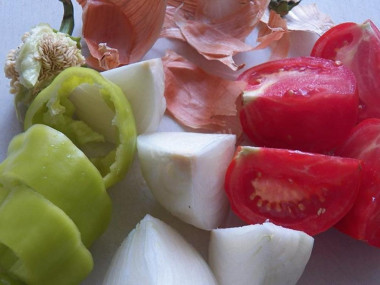
To cook a large number of vegetables, take a wide and deep saucepan. Tomatoes, bell peppers and onions cut into large chunks, you can cut into quarters. Remove the seeds and stalks from the pepper. Remove the buttocks from the tomatoes and onions.
Step 4:
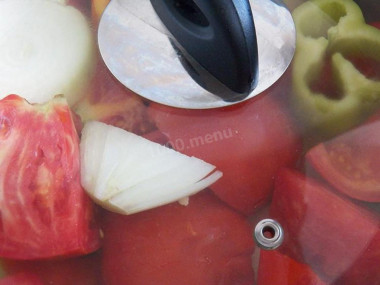
Put the chopped vegetables in a saucepan, fill with water. Pour enough water so that it completely covers the vegetables.
Step 5:
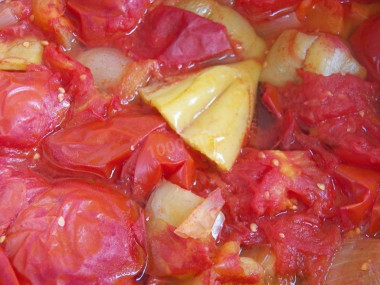
Turn the stove on low heat and start cooking the vegetables until they boil. Tomatoes should burst at the same time, peppers can spread, onions too. It's not scary.
Step 6:
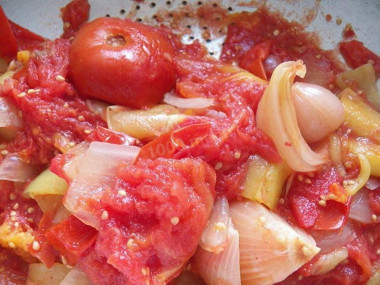
When the vegetables reach the desired condition and boil well, rub them to remove the peel, tomato seeds. How do I know if the vegetables are ready for wiping? If you see that the contents of the pan look more like porridge, then it's time. First, rub the vegetables through a regular colander.
Step 7:
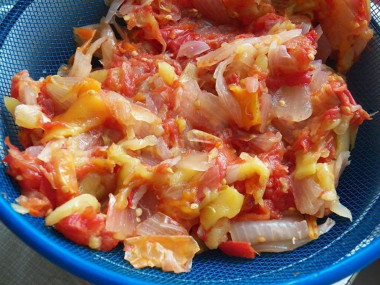
Then take a sieve. The smaller the sieve is, the better and more delicate in texture your ketchup will turn out. If you are not satisfied with the consistency of ketchup, you can process it with a blender to a puree state.
Step 8:
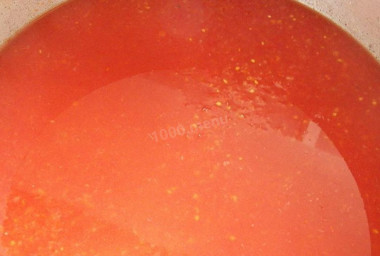
Put the vegetable mixture back in the pan, put it on the stove and cook over low heat until the desired consistency is obtained. It took me about two hours for this procedure. It may take you more or less. Stir the mass periodically. Towards the end of cooking, add salt to the vegetables, add sugar and dry spices to taste. Try it and report what you think is necessary. Let the mixture stand on the fire for another 10 minutes . Pour vinegar into the ketchup, mix and immediately remove from the stove.
Step 9:
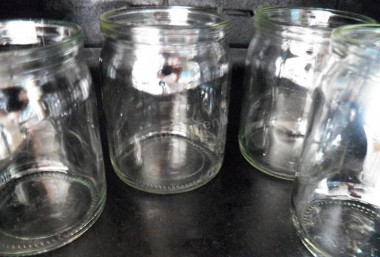
Sterilize glass jars in any way convenient for you: steamed, in the oven or in the microwave. I did it in the oven. For cans of one liter or less, 10 minutes of heat treatment at a stable temperature of 120-150 degrees is enough. Banks need to be put in an already warmed oven and count the time from this.
Step 10:
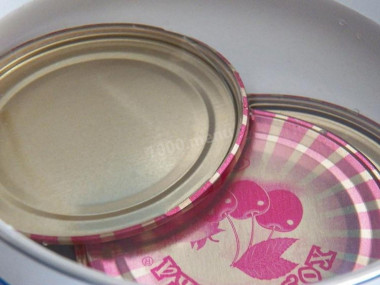
Boil the metal lids in water for 10-15 minutes. Keep them in boiling water for at least 10 minutes, this is important.
Step 11:
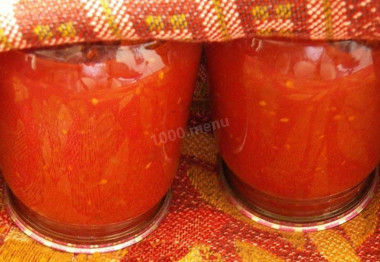
Pour the hot ketchup into the prepared glass jars and immediately roll it up. Turn the jars upside down, cover with a warm blanket and leave to cool completely. I rolled up not only cans, but also small bottles, which are easier to use for serving.
Step 12:
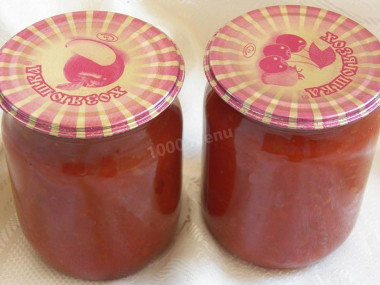
Store homemade tomato ketchup in a dry, dark, cool place without direct sunlight.
The density of homemade tomato ketchup can be varied by adding boiling water. Do this in step 8, if you see fit. If it seems to you that the sauce is too liquid, let it boil so that the excess moisture evaporates. Special thickeners are added to the purchased ketchup, including starch (but we will not do this).
So that summer supplies are guaranteed to please you throughout the cold season, read the basic rules, secrets and life hacks about preparations for the winter.
Vinegar in recipes, unless otherwise specified by the author, is added by default at a concentration of 9%.
Since the degree of salinity, sweetness, bitterness, sharpness, acid, burning is individual for everyone, always add spices, spices and seasonings, focusing on your taste! If you put some of the seasonings for the first time, then keep in mind that there are spices that it is especially important not to shift (for example, chili pepper).
Caloric content of the products possible in the composition of the dish
- Tomatoes - 23 kcal/100g
- Sweet pepper - 27 kcal/100g
- Cinnamon - 247 kcal/100g
- Granulated sugar - 398 kcal/100g
- Sugar - 398 kcal/100g
- Wine vinegar (3%) - 9 kcal/100g
- Vinegar 9% - 11 kcal/100g
- Balsamic vinegar - 88 kcal/100g
- Apple vinegar - 14 kcal/100g
- Vinegar - 11 kcal/100g
- Black pepper peas - 255 kcal/100g
- Salt - 0 kcal/100g
- Onion - 41 kcal/100g
- Ground red pepper - 318 kcal/100g
- Allspice - 263 kcal/100g

